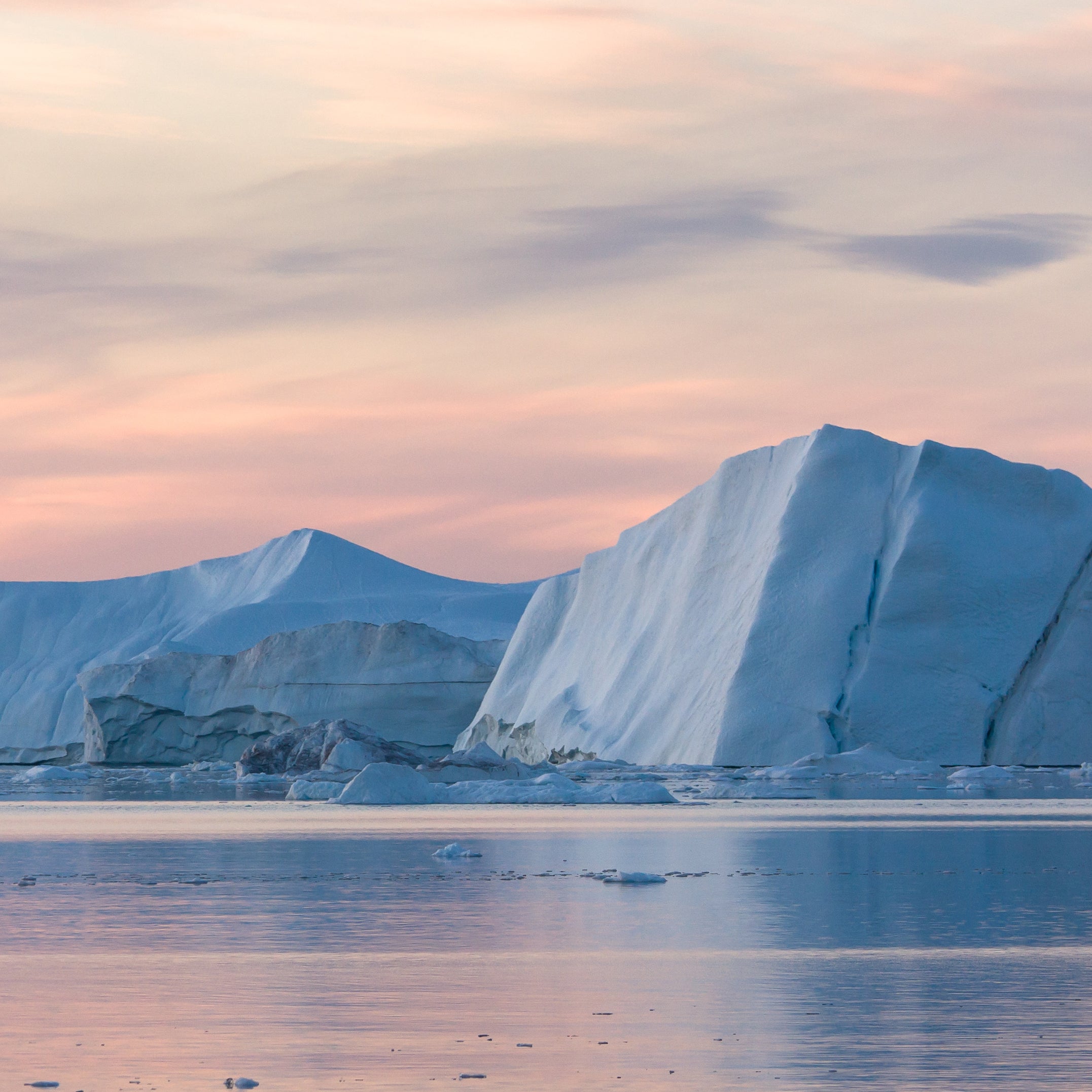“I'm glad I'm not going first,” says Darcy St. Laurent as he watches our teammate AJ step out onto a very thin, unstable piece of Arctic Ocean sea ice. The ice bows dramatically under AJ’s weight, and Darcy and I both watch, mouths agape, as he slowly shuffles his skis forward while a wave of rubbery ice pushes out in front of his ski tips.
Of all the dangerous things people do on planet Earth, North Pole expeditions easily top the list. One misstep could send us plunging into an icy abyss—almost immediate death. With conditions constantly changing, our margins for error are nonexistent. “You can't think about these things too much,” my old dog sledding boss, Arleigh, used to say.
Safely across and on standing on more stable ice, AJ turns to pull his polar sled across the same sheet, creating several cracks along his ski tracks. Ocean water immediately seeps through. As unnerving as it looks, I still have some time to cross safely.
Sea ice is a fickle beast. Unlike freshwater ice, it has plasticity and will bend when you stand on it. But its integrity has limits. If any crack or break occurs, the stability of the entire area is sacrificed. Skiing across a sketchy ice sheet is like Indiana Jones racing across that hanging rope bridge as it falls apart beneath him. I look back Darcy and, with my best gallows humor quip, tell him, “I'm glad I'm not last!”
While over 6,000 people have summited Everest, only 250 people have traversed the Arctic Ocean from land to the geographic North Pole. It has a success rate lower than that of summiting K2. Since 2011, there has only been one team to reach the pole from land—that was the duo of myself and Ryan Waters, in 2014. We completed what may realistically be the last ever North Pole expedition in history.
To understand why this particular undertaking is so difficult, you need to know a little more about the Arctic Ocean itself. First, it’s huge: 5.5 million square miles, to be exact. That’s larger than Europe. It plunges to the depth of 14,000 feet. Temperatures range from a balmy just-above-freezing in the summer to nearly 80 below in the winter. The cold is like a brick wall. It stops everything. At 40 or 50 below, nylon can tear like a sheet of paper and tent poles can snap like dry twigs. There is so little moisture in the snow that pulling our sleds feels like we are dragging them across sand paper. Ironically, the air is humid as well. Keeping clothes and bodies frost free is impossible.
Perhaps its most unique feature is the fact that nearly the entire ocean is covered in a thin sheet of ice, maybe five or six feet thick. This sea ice can be several miles wide or just a few feet across, and today grows to be only about five feet thick at its thickest. Pieces of ice freeze and refreeze, forming pressure ridges, rubbled ice, vertically heaved slabs, and a million other combinations of hazardous surface conditions.
To reach the North Pole from land is a journey of 480 miles in a straight line. But the path is anything but straightforward. With ice moving and shifting, the surface is constantly in flux. You can actually see football field-size pans of ice colliding and moving in a screeching chug, chug, chug sound. There is an overall drift to the ice, too. Ocean currents push the entire mass slowly from the pole toward northern Canada and Greenland. Because of these shifts, we may wake in camp to find that we lost three miles of forward progress overnight.
“When we first started, it was 90 percent survival and 10 percent travel,” says Darcy, who I travelled with on an expedition to the North Pole in 2010. Not one for hyperbole, Darcy is a career military man specializing in search and rescue.
But as forbidding as the Arctic Ocean may be, it is also beautiful. Nowhere else on the planet is our environment sculpted in such a unique and dynamic way. Blocks of blue ice the size of houses. Crystallized ice “flowers” formed on newly frozen leads. Each day brings some unique variation.
All tallied, I have completed more North Pole expeditions than any other American in history, having spent nearly a year of my life on the Arctic Ocean. Why? I’m not 100 percent certain, but I know I like the long, slow thoughtful process of this type of travel. It’s like a chess game that lasts for nearly two months.
From my first expedition in 2005, to a Last Degree expedition I guided last spring, I have personally observed how Arctic sea ice conditions today are dramatically different than they have ever been in the past. The ice is thinner, and its mass is considerably reduced, as temperatures have become warmer. While the Arctic environment may be the bane of my expedition life, the North Pole is the most enthralling place I’ve ever been. In the not-so-distant future, it may be gone.
Eric Larsen is a polar explorer. His book, On Thin Ice: An Epic Final Quest into the Melting Arctic, was published last October.

